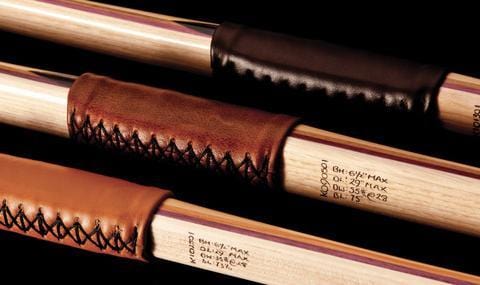A new English Longbow needs to be used with due care and attention
Your English Longbow has been made very carefully over a long period of time to draw in an optimum bend and tillered to suit the stated draw length and draw weight. Before using your new bow you need to ‘teach’ it to shoot. This is why we always tell Longbow Archers to never let anyone else draw your bow. It’s been taught to shoot to how you shoot and any variation on this usually has very bad results!
To teach your bow, brace it a low brace height and allow the bow to settle for about an hour, then slowly part-draw the bow several times and come down again. When you buy a longbow from The Longbow Shop we set the brace height up as standard so you will need to take a few twists out to lower the brace height.
Continue this until you have reached full draw after 10 - 15 part draws. Now brace the bow fully and start to shoot arrows into a close target from a part-drawn position working back to full draw, again after 10-15 shots.
NEVER draw a bow back too quickly, to do so is to treat it very badly and you are at a much greater risk of it breaking into firewood.
We find that this is a common problem when archers used to shooting compound and recurve bows first pick up a Longbow. Take it easy there’s plenty of time.
Another potential problem is temperature: the colder a piece of wood the stiffer and more brittle it becomes. Conversely, as the weather gets hotter, the limper it will get and therefore you can expect less cast and performance. In practice the extremes are not often encountered in this country but are common in other countries.
Avoid using a bow in either sub-zero (centigrade) temperatures, or in extreme heat as in the one instance it might break and in the other it will suffer long-term damage and future loss of performance.
Once the bow has shot around 24-36 arrows from full draw it will begin to bed in and should start to feel sweeter to draw. If you always warm up the bow before shooting in earnest, you will extend its useful life and performance, and it is much less likely to break. In time all wooden bows will likely ’follow the string’ this varies from one wood to another and one bow to another. Never try to straighten a bow by bending it the ‘wrong’ way as in many cases they can break.
The above is a small summary of many little bits of advice which we have come across over many years of Longbow selling and shooting. The more respect that you can give your equipment the better it will serve you.
General care of your bow
Rubbing a beeswax-based polish into the bow even if varnished will help increase the life of the bow, keep moisture out and also help it look good.
Check the bracing height after stringing the bow and before shooting: do not overbrace the bow. A slightly low bracing height is not a worry.
ALWAYS keep within the stated draw-limit: never overdraw or dry loose a longbow.
NEVER bend the bow the wrong way as this will cause damage, even breakage.
Check the string regularly for signs of wear, particularly at the nocks. If the string has got dirty or muddy it may have also got grit into the fibres, which will cause rapid wear. Treat your bow to a new string every 12 months minimum (on it’s birthday!).
Keep the string well waxed: this will both improve performance and help to keep out both dirt and moisture. It is always a good idea to "have a second string to your bow": call us and we can have one made for you.
REMEMBER all these CAN and PROBABLY WILL all contribute towards a broken bow:
- An overbraced bow
- An overdrawn bow
- A broken string
- A dry loose
- A carelessly braced bow
- A bow drawn too quickly
- A broken arrow nock
- A lift in the bow backing
- A bow bent the wrong way
We trust that, by following the above advice and by using the recommended method of bracing your bow, you will enjoy shooting your new bow for many years to come.
Our English Longbow warranties can be found here





